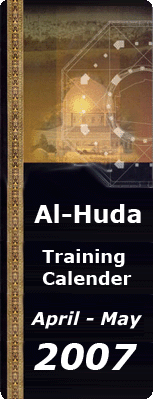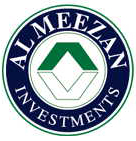| |
By Aisha Qamar
OVER the last few years, Islamic finance has experienced tremendous growth. The current market for Islamic financial products is estimated at over $265 billion and is predicted to grow at 12-15 per cent per annum over the next 10 years.
According to the International Islamic Finance Forum, there are around 270 Islamic banks worldwide in over 75 countries with the total assets estimated at more than $265 billion and financial investments above $400 billion.
Complementing this surge in growth is an increased focus on the structuring and development of new products and services to meet the ever-increasing demand for Shari’ah compliant financing alternatives. One such product that has recently gained considerable momentum is the Islamic bond known as Sukuk. It is agreed upon by Shari’ah scholars that the conventional fixed income securities prevailing in the financial markets are not permissible under the Islamic law due to the involvement of interest. However, these securities play a pivotal role in establishing an efficient capital market and enable institutions to tap a large investor base to meet their financing needs, in addition to providing an avenue for long-term fund placements. Keeping this in view, the availability of a Shari’ah compliant alternative was considered imperative for the growth and sustainability of Islamic financial markets. In such a scenario, the evolution of Sukuk came as a much-needed development.
Sukuk (plural of Sak) is an Arabic word which literally means “certificates”. Generally, Sukuk can be considered analogous to asset-backed securities which provides an investor with ownership in an underlying asset or a pool of underlying assets along with the cash flows and risks commensurate with such an ownership.
The foremost condition for the issuance of Sukuk is the existence of tangible underlying assets on the balance sheet of the issuing entity, which is the basic distinguishing feature between a Sukuk and a conventional bond/security. Contrary to the position in case of a conventional bond which is a contractual debt obligation entitling the holder to receive interest and principles on specified dates, a Sukuk holder has a proportionate share in the revenues generated by the Sukuk assets as well as in the proceeds of the realisation of the underlying assets.
The workflow of a Sukuk transaction is based on the conventional securitisation process which entails setting up of a special purpose vehicle (SPV) to acquire the intended assets and to issue claims on those assets. A Sukuk transaction can be structured in a number of different ways, depending upon the type of underlying assets and the specific financing needs of the issuing entity. The transaction may be based upon any one of the permissible Islamic financing modes, such as Ijara (leasing), Musharaka (profit-loss sharing), Salam (forward sale) and Murabaha (deferred payment) etc.
Whichever mode of financing is employed, the returns on Sukuk certificate are tied with the income generated through the underlying asset in the transaction. Like conventional bonds, these certificates can be negotiated and traded freely in the market; however their tradability is strictly contingent upon the nature of the underlying asset during the term of Sukuk, since the sale and purchase of debt or liquid assets (cash or receivables) is not permissible under Shari’ah.
The Sukuk market experienced an unprecedented growth during the last five years, growing to $41 billion with $11 billion worth of issues coming from the Gulf region. However, it was the Malaysian government that became the forerunner by issuing the first Sukuk in 2002 and selling it in the global markets.
Initially, the market was limited to the domain of sovereign issues; however, realising its vast potential, a number of corporate entities in the Middle East as well an in Asia have tapped into it. Interestingly, this Shari’ah compliant instrument has attracted the attention of the non-Muslim world as well, where issuers are seeking to take advantage of the increasing liquidity and a large investor base in the Islamic world, particularly in the oil-rich Gulf region.
A case in point is the issuance of a $100 million Sukuk in 2004 by the German Federal State of Saxony-Anhalt. More recently, in December 2006, the UAE-based Abu Dhabi Islamic Bank raised $800 million for its first ever Sukuk, with almost 40 per cent of investors coming from Europe. According to market intelligence, Japan, China and Indonesia are among countries expected to enter the Sukuk market in the near future.
Pakistan entered the international Sukuk market in January 2005 with the issuance of $600 million worth of sovereign certificates for the government. Subsequently, local currency Sukuk transactions have been successfully undertaken by Wapda (Ijara Sukuk) and the Sitara Group (Musharaka Sukuk) worth Rs8.51 billion. Two more corporate issues are in the offing, amounting to $85.3 million, for Karachi Shipyard and Engineering Works and Sui Southern Gas Company.
Like all financial instruments, Sukuk are also subject to a number of risks. Apart from the more conventional risks relating to interest rate (due to benchmarking with LIBOR/KIBOR etc.), credit and foreign exchange, the sheer novelty of these certificates also exposes them to the risk of Shari’ah compliance which is of paramount importance in case of Islamic financial instruments. In order to sustain their demand and growth, Sukuk face the daunting challenge of conforming to all requirements of Islamic finance while also remaining competitive in the international market.
This risk is further compounded due to non-uniformity in Shari’ah rules and regulations across jurisdictions which may be a factor in the cross-border issuance and trading of these instruments. Furthermore, since Sukuk are invariably backed by an underlying tangible asset, there is the risk of loss, damage or non-maintenance of the asset which will undoubtedly have an impact on the Sukuk returns.
On the flip side, issuance of and investing in Sukuk have a direct impact on real sector activities, since it essentially involves funding of trade or production of tangible assets. This makes Sukuk an ideal mode of financing for large infrastructure projects. In addition, Sukuk investors have an implicit right of information on the use of their funds and the nature and performance of underlying assets, which is not usually the case in conventional bonds. This can serve to give the investors the peace of mind with the guarantee that their funds are being utilised for the intended purpose.
The emergence of Sukuk in the financial industry is being regarded by many as a major step forward by the Islamic financial markets which will go a long way in ensuring its growth and development. They provide a legitimate investment avenue to religiously-inclined investors and at the same time act as an anchor to generate real economic activity. As their acceptability and issuance increase in the market, they will undoubtedly become a key liquidity management tool for Islamic financial institutions.
The tradability of these certificates, albeit with a few conditionalities will pave the way for the establishment and growth of a Shari’ah compliant secondary market. At the moment, however, active trading is constrained due to the limited number of issuances and the fact that most investors hold on to these certificates owing to a lack of alternative instruments in this asset class. But if the ever-increasing interest in these certificates and the research put into their structuring and streamlining is any indication, the market for Sukuk has the potential to exponentially enlarge the horizon of Islamic finance.
(Courtesy Dawn ) |








